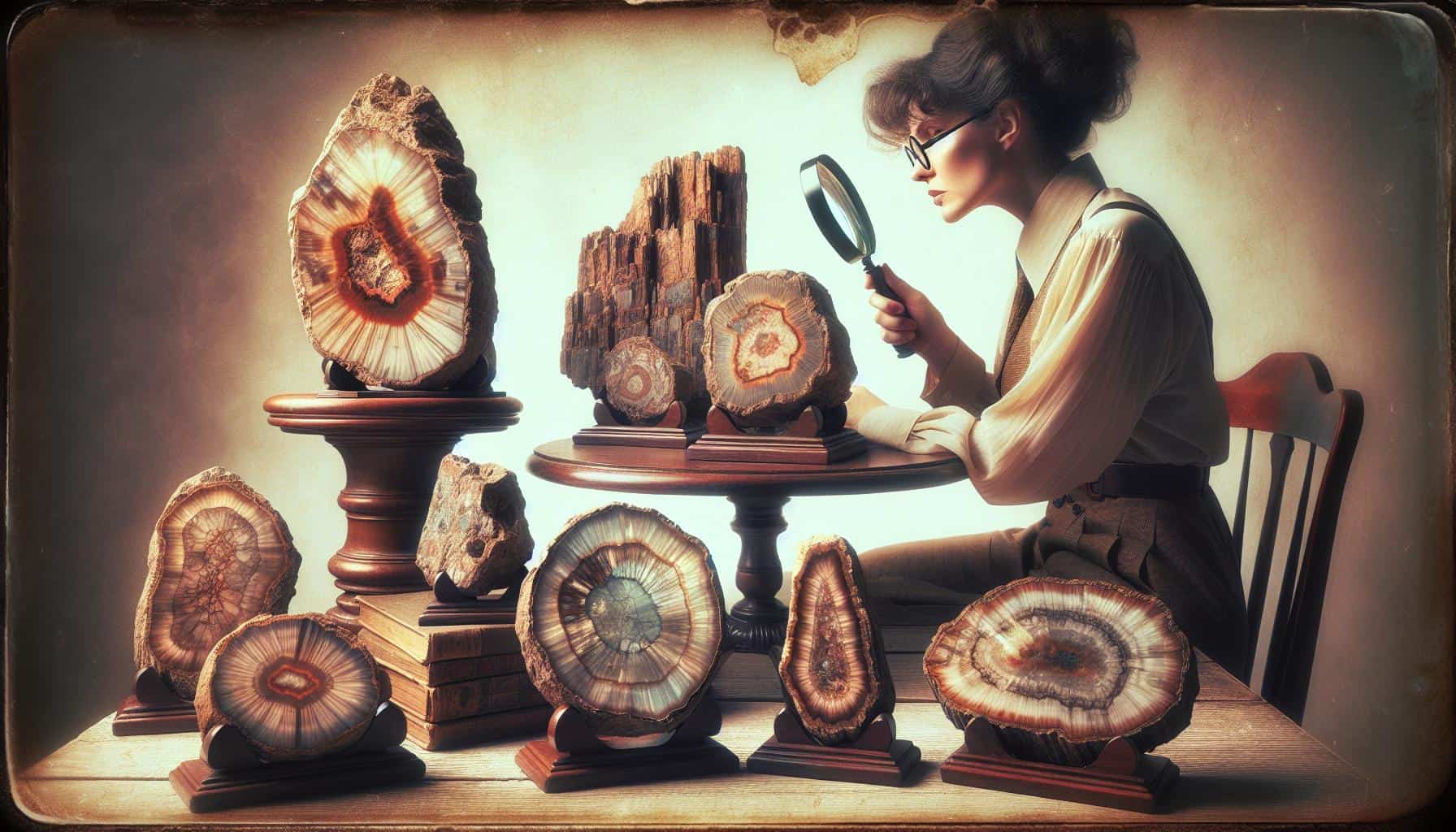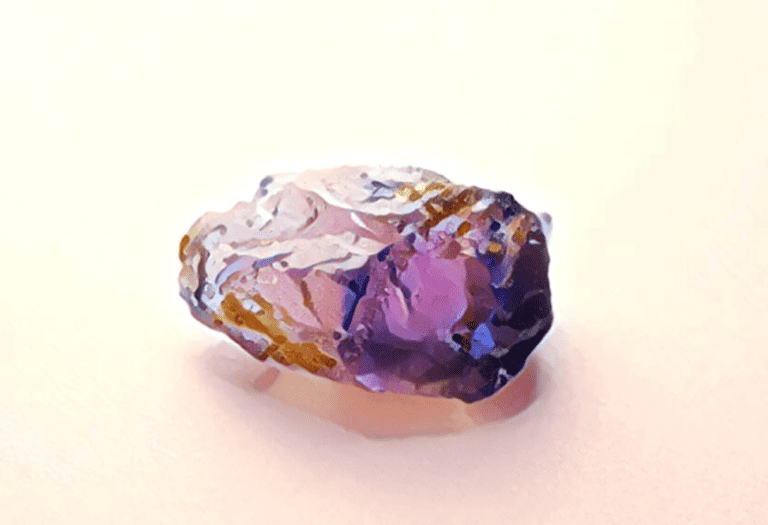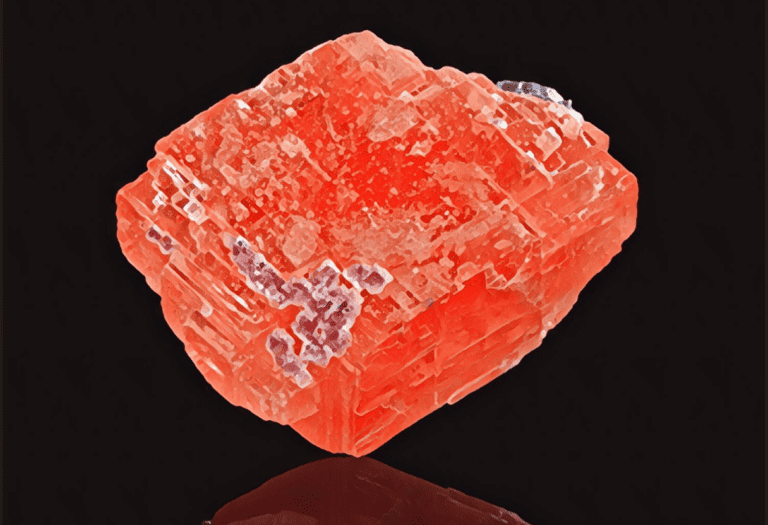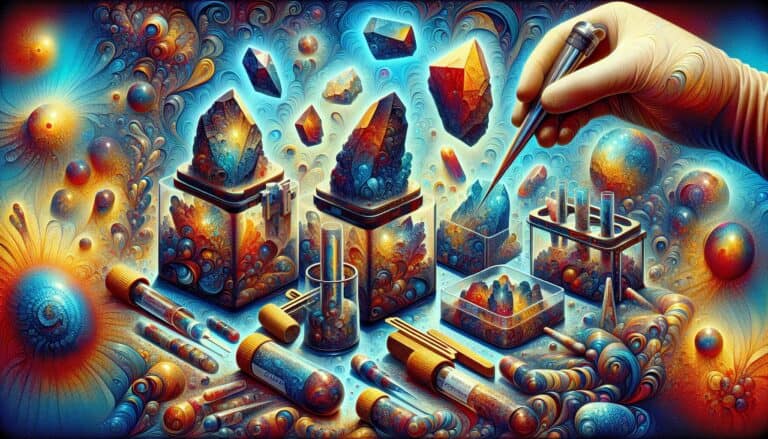Ever stumbled upon a piece of petrified wood and wondered about its value?
You’re not alone. Petrified wood, with its unique blend of geological history and natural beauty, has intrigued enthusiasts and collectors alike. It’s not just a rock; it’s a fossil, a piece of ancient life forever captured in stone.
Understanding the worth of petrified wood can be as complex as the specimens themselves. Factors like size, color, and even the location where it was found all play into its value. Whether you’ve unearthed a small piece in your backyard or are considering a larger investment, knowing what affects its price is key.
Dive into the fascinating world of petrified wood valuation and discover what makes these ancient treasures so coveted.
You might find that the piece you’ve got is more than just a pretty stone—it could be a slice of history with a price tag to match.
Petrified wood value is influenced by color, clarity, size, and rarity. Vibrant hues and well-preserved details increase worth. Market demand and limited availability also affect prices. Verify authenticity and purchase from reputable sources for genuine, high-quality specimens.
What Is Petrified Wood?
Picture yourself walking through the forest, and you stumble upon a stunning piece of wood that looks as if it’s turned to stone. You’ve just found petrified wood, one of nature’s most fascinating phenomena. But what exactly is it?
Petrified wood is essentially a fossil where all the organic material has been replaced by minerals, typically quartz, while retaining the original structure of the wood. This process occurs when wood becomes buried under sediment and is initially preserved due to a lack of oxygen which inhibits decomposition. Mineral-rich water flowing through the sediment deposits minerals in the plant’s cells and as the plant’s lignin and cellulose decay, a stone mold forms in its place.
Over millions of years, this organic-to-inorganic exchange creates a fossilized version of the original wood. Petrified wood can come from any time period but most of it found today is from Trees that lived 100 to 200 million years ago.
The process, known as permineralization, leads to the fascinating details you can see in petrified wood:
- Preserved rings that tell the age of the tree and historical climate conditions
- Bark and wood grain textures that showcase the tree’s original features
- A kaleidoscope of colors thanks to various minerals like copper, iron, and manganese
From a geological perspective, petrified wood is an important record of past ecological systems, which can help scientists understand the ancient world and its environment. For collectors, petrified wood holds different values and is often sought after for its aesthetic qualities, historical significance, and distinctive beauty.
Understanding that petrified wood is more than just an attractive stone opens up a world where geology and history intertwine. It’s a tangible piece of Earth’s extensive past that you can own, display, and cherish. Whether you’re interested in its scientific importance or enticed by its decorative appeal, petrified wood carries with it a story millions of years in the making.
Petrified Wood Prices: Factors That Affect Value

Color, Clarity, and Cut Quality
When you’re considering the worth of petrified wood, color is a critical factor. Vivid and varied hues often enhance the value due to the aesthetic appeal and rarity of certain colors. The clarity of the stone also plays a significant role; pieces with fewer impurities that allow the innate details to shine through are typically more desirable. Finally, the cut quality can have a substantial impact on worth. Properly cut petrified wood that showcases its best features—like rings and grain textures—is more likely to fetch a higher price. Expertly polished slices that reveal the beauty of the wood’s structure can transform an ordinary piece into a prized collector’s item.
Market Demand and Availability
Market demand directly influences the value of petrified wood. If you’ve got a piece that’s highly sought after, chances are it’ll be worth more. The popularity of petrified wood for use in jewelry, furniture, and home decor can lead to a surge in its market value. Rarity is another driving factor; the rarer the wood, the higher the price it can command. The availability of petrified wood also fluctuates depending on the locale it comes from. Areas where petrified wood is protected or where collection is restricted can lead to increased prices due to limited supply. Keep an eye on current market trends to get a better idea of how much your piece could be worth.
Understanding Petrified Wood: A Rare Gem

The Rarity of Petrified Wood
Imagine holding a piece of ancient life, frozen in time. Petrified wood is just that: a remarkable natural phenomenon where wood has transitioned to stone through the process of permineralization. This unique transformation can take millions of years. Petrified wood’s rarity stems from the precise conditions required for its creation. You’re not just finding a preserved piece of lumber; you’re discovering an artifact that survived a gauntlet of geological conditions.
For petrified wood to form, trees must become buried quickly under sediment in an oxygen-poor environment to slow decay. Then, groundwater rich in minerals such as silicates and carbonates seeps through, replacing the original wood structures with minerals, often incredibly detailed down to the microscopic level. Considering these exacting circumstances, petrified wood’s presence on the market is surprisingly scarce. Highly sought-after pieces come from localized areas, where conditions were just right, leading to a concentration of high-quality specimens.
Origins and Characteristics
Different environments and geological periods led to the formation of petrified wood, which is typically found in areas known for past volcanic activity or regions that were once lush forests. These ancient woods hail from all over the world, with notable deposits in the United States, Madagascar, and Indonesia. The type of mineral in the water during petrification determines the color and appearance of the petrified wood. Iron, copper, and manganese create vivid bands of red, green, and blue, adding to the beauty and value of each piece.
The characteristics of petrified wood are as varied as the environments from which they emerge. Some common features that capture the interest of collectors and enthusiasts include:
- Preservation of the original structure which can showcase growth rings and bark.
- Variegated colors reflective of mineral content during fossilization.
- Size and thickness of the slabs, which appeal to different markets and applications.
Keep in mind that petrified woods often carry the legacy of their origin. For example, woods from the Chinle Formation in Arizona are famous for their rainbow colors, whereas specimens from Indonesia are known for their opalized forms. As a connoisseur or casual enthusiast, understanding these characteristics can help you appreciate the tapestry of factors that imbue petrified wood with value beyond its immediate aesthetic appeal.
Petrified Wood Grading and Valuation
The Grading System for Petrified Wood
When you’re delving into the world of petrified wood, understanding the grading system is crucial for evaluating its worth. Similar to gemstones, petrified wood is graded based on several factors including color, clarity, size, and even the quality of the preservation. The grading scale can range from commercial grade, which is more abundant and typically used for furniture or landscaping, to collector grade, which boasts exceptional qualities and is much rarer.
Here are key points to remember:
- Color: Vivid and varied colors may indicate a higher grade.
- Clarity: The level of translucency can affect value; clear pieces are often more prized.
- Size: Larger specimens with minimal breakage command higher prices.
- Preserved details: Pieces with well-preserved grain and bark patterns are more valuable.
Experts look for the intactness of the specimen; this means the original structure should be well-preserved without significant damage. The presence of bark and clearly visible growth rings can elevate a piece to a high-end status.
Certification and Appraisal
If you’re considering buying or selling petrified wood, obtaining certification or an appraisal from a reputable source can significantly impact its market value. Certified pieces provide assurance of authenticity and a benchmark for quality. An appraiser will assess the petrified wood against a myriad of parameters, considering historical provenance, size, and the specific details of the specimen.
For high-value transactions, ensure you work with a certified gemologist or a professional specializing in petrified wood. They will provide detailed reports on your piece, including:
- Origin
- Approximate age
- Weight
- Composition
Having your petrified wood certified or appraised not only underpins its value but also increases its sellability in a competitive market. Whether you’re a collector or a seller, these evaluations are indispensable for understanding the worth of these ancient treasures. Remember, the more information you have, the better your position in negotiations, ensuring that every piece garners the attention and price it rightly deserves.
Current Market Trends in Petrified Wood Pricing
The value of petrified wood can fluctuate due to a myriad of factors including supply, demand, and even interior design trends, which often dictate the popularity and therefore price of natural artifacts. Recognizing these trends is essential for both buyers and sellers looking to navigate the market effectively.
Rarity and Demand
Currently, rare specimens with exceptional characteristics like vibrant colors, distinct rings, and large sizes command high prices. Petrified wood from certain locations that are no longer accessible for collecting, due to legal protections or geographic changes, also sees a premium. Your investment in such exclusive pieces might be well-timed with these collector-grade items being in demand.
Influence of Decor Trends
Interior design trends shift towards organic and natural materials, bolstering the market for petrified wood. As more enthusiasts and designers incorporate these ancient pieces into modern settings, an appreciable uptick in prices may be noticeable. Quality craftsmanship in polishing and sculpting petrified wood into functional art pieces enhances its market value.
E-commerce Impact
Online marketplaces have broadened the scope for petrified wood sales, with platforms like eBay and Etsy making global transactions simpler. This accessibility has generally opened up pricing to a worldwide audience, bringing more competition into the market. Keep watch for online auctions— these can significantly drive up prices for exceptional pieces.
Investment Perspective
From an investment standpoint, petrified wood’s historical appreciation in value makes it a notable consideration. The aging of certain pieces, which could be hundreds or even thousands of years old, adds to their story and potential value, especially for those pieces backed by certification and appraisal.
| Factor | Trend Impact |
|---|---|
| Rarity | Increases Price |
| Legal Protections | Limits Availability, May Increase Price |
| Decor Trends | Increases Demand |
| E-commerce | Broadens Buyer Base, Increases Competition |
| Historical Value | Potentially Ups Value with Age |
Monitor these variables closely to understand how they might affect your petrified wood investments. The landscape is dynamic, and staying in-the-know ensures you’re poised to make the most informed decisions.
The Most Expensive Petrified Wood
When exploring the world of petrified wood, you’ll discover that some pieces stand out in terms of value. These aren’t your average backyard fossils; they are specimens that fetch a pretty penny. The rarity, the colors, the size, and even where the wood comes from all contribute to the final price tag.
Top-shelf petrified wood can command prices well into the thousands of dollars. Specific factors that drive up these costs include:
- Exotic Colors: Striking and unusual colors resulting from unique mineral deposits
- Immaculate Preservation: Exceptional detail where the original wood structure is perfectly maintained
- Size and Weight: Larger pieces with considerable weight are often more sought after
- Historical Provenance: Specimens linked to unique historical periods or events
Record-Breaking Sales
Instances where petrified wood has made headlines with their sale prices give insight into its potential investment value. From auction houses to private sales, the market has seen robust activity in the recent years. For example, a piece of petrified wood from Arizona, notable for its vibrant color spectrum and size, was sold for over $50,000.
Where to Find Premium Specimens
Seeking out these exclusive pieces involves honing in on reputable dealers that specialize in fossils and petrified wood. Whether at trade shows, exclusive galleries, or specialized online stores, you’re most likely to encounter the crème de la crème of petrified wood in these spots. Remember, verification of authenticity is paramount when dealing with high-ticket items, so always ensure you’re working with credible sources.
Networks of collectors and enthusiasts can also be valuable in your quest for top-tier petrified wood. Engaging with these communities might provide leads to private collections where exceptional pieces change hands outside the public eye. Your odds of securing a valuable addition to your collection increase as you delve deeper into this niche community.
Buying Petrified Wood: Tips and Recommendations
Seeking out petrified wood can be an exciting venture, whether you’re an avid collector or simply have an appreciation for its ancient beauty. However, it’s essential to approach purchasing with a discerning eye and reliable information. Here are some tips and recommendations to help guide you through the process.
Where to Purchase High-Quality Petrified Wood
When you’re on the hunt for quality petrified wood, consider the following venues:
- Rock Shops and Fossil Stores: Local businesses often have a selection of petrified wood, and owners can provide valuable insights into the items’ origins.
- Trade Shows and Expos: These events bring together numerous vendors, offering a wide variety of specimens from different locations and time periods.
- Online Marketplaces: Platforms like eBay and Etsy allow access to a global market but require careful scrutiny of seller reviews and product descriptions.
- Authorized Dealers: Look for sellers specializing in petrified wood and who are known for their reputable practices in the community.
Networking within collector circles can also lead to private sales where some of the best specimens exchange hands.
Ensuring Authenticity and Value
When purchasing petrified wood, verifying authenticity and value is crucial:
- Certification: Reputable sellers should provide a certificate of authenticity, especially for more valuable pieces.
- Expert Evaluation: Consider getting the opinion of a geologist or a knowledgeable collector to validate the piece’s authenticity.
- Comparable Sales: Research recent sales of similar items to better understand current market value.
- Physical Inspection: Look for the distinctive features of petrified wood, including its weight and the quartz crystal presence, turning to experts when in doubt.
Remember, preserving the integrity of your collection means taking the time to ensure each piece’s authenticity and value. This not only secures your investment but also honors the historical significance of these ancient artifacts. By adopting a thoughtful approach and utilizing the resources available to you, acquiring petrified wood will not only enhance your collection but will also provide a tangible connection to the distant past.
Conclusion: Buying & Selling Petrified Wood
Determining the value of petrified wood is an art in itself.
Armed with the knowledge of what to look for and where to buy, you’re well on your way to making informed decisions. Remember, the worth of petrified wood goes beyond dollars and cents—it’s about the story each piece tells and the history it represents. Whether you’re a seasoned collector or a curious newcomer, respect for the material and its origins is key.
Cherish your finds and enjoy the timeless beauty petrified wood brings to your collection.



![NC Rockhounding Sites in [year]: Locations & Treasures](https://observationhobbies.com/wp-content/uploads/2024/01/7WYi0Mp8byhR-Iby7aEaJ-768x439.jpg)

![Alaska Rockhounding Sites in [year]: Locations & Gems](https://observationhobbies.com/wp-content/uploads/2024/01/w8vGE4zrwO-0XFwKV2tuI-768x439.jpg)

